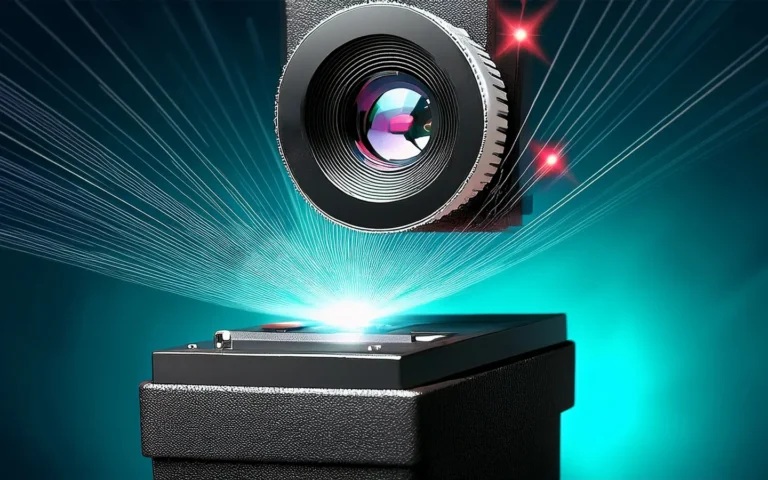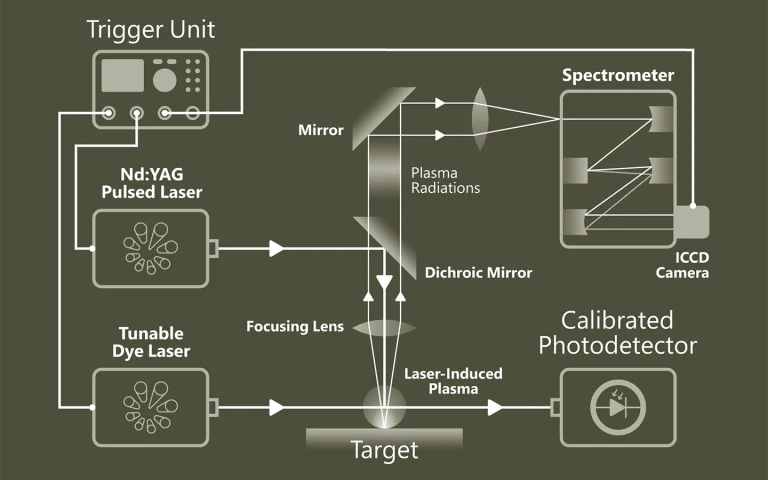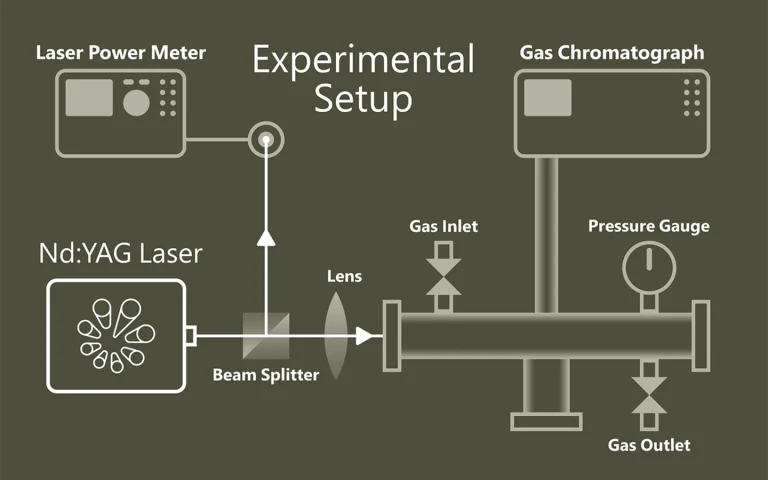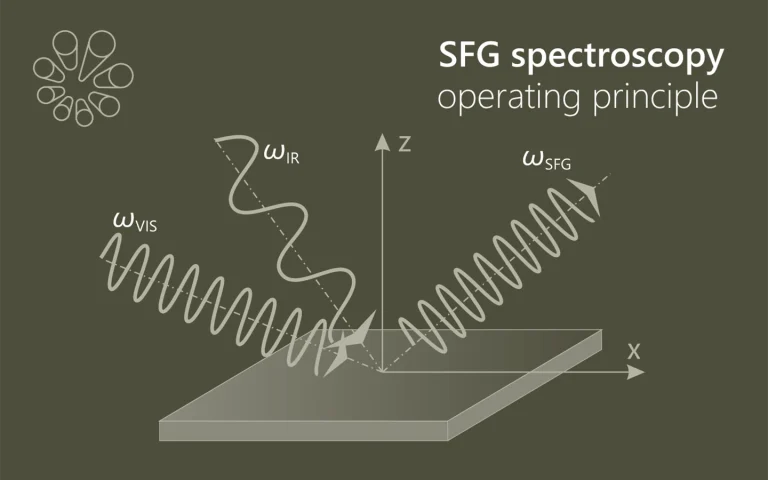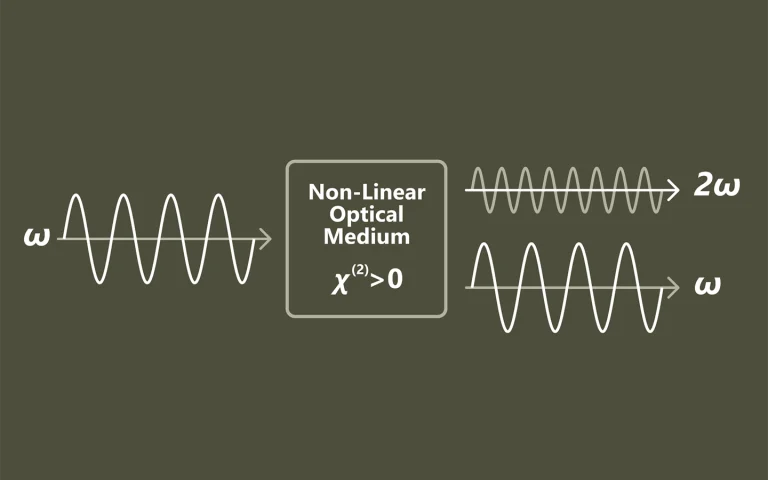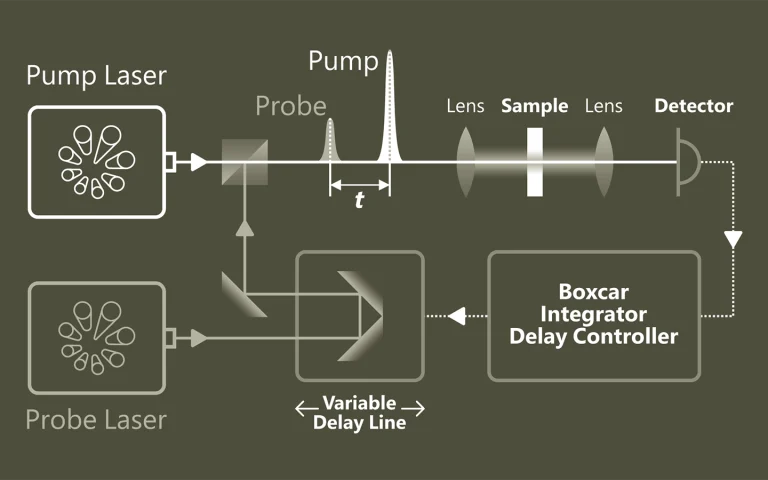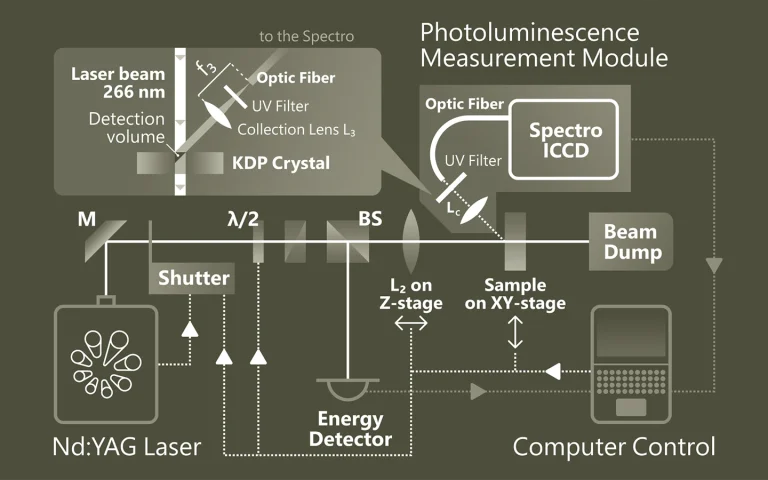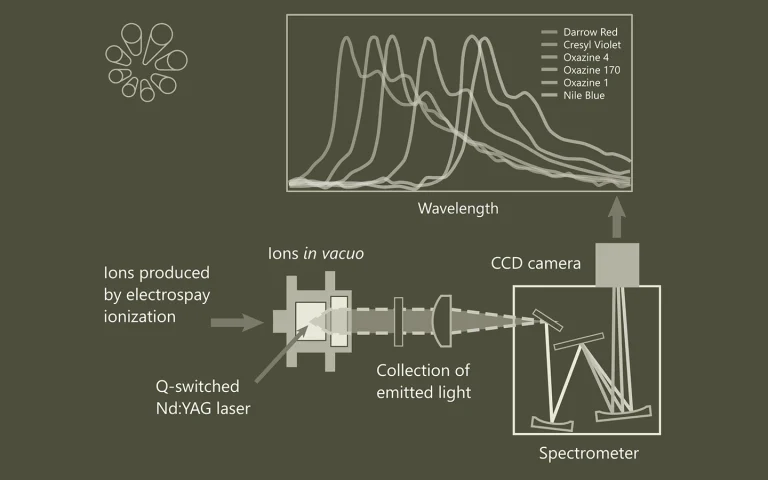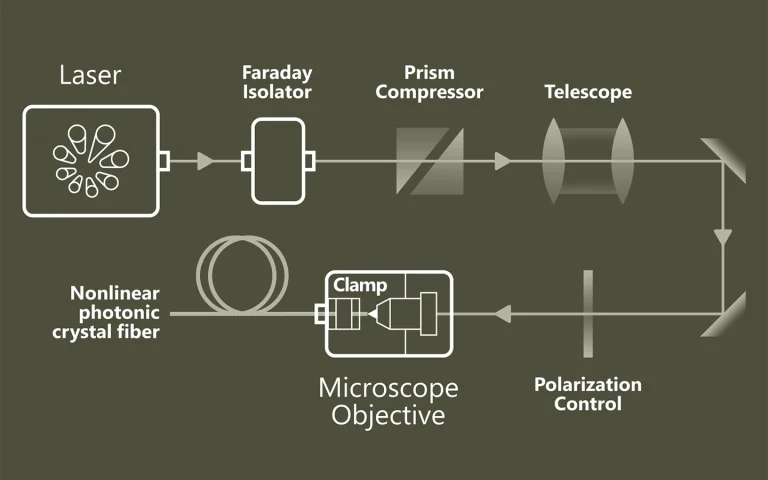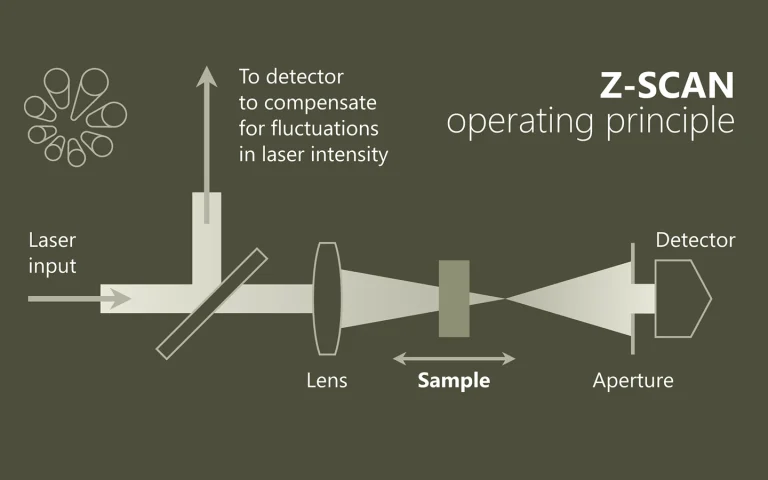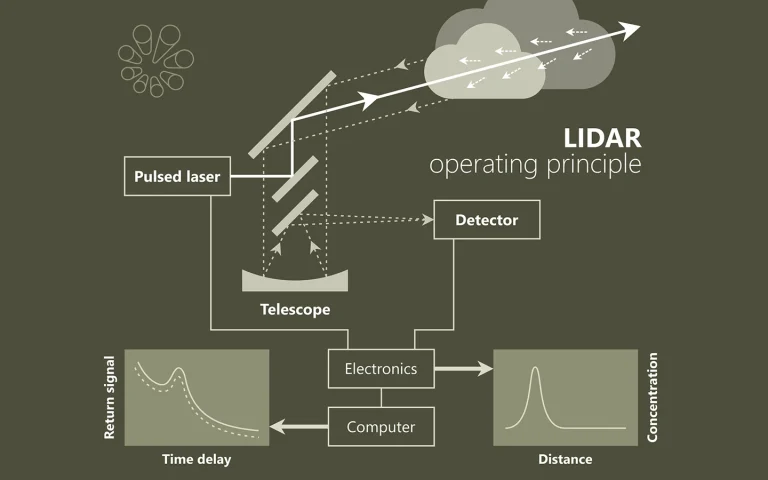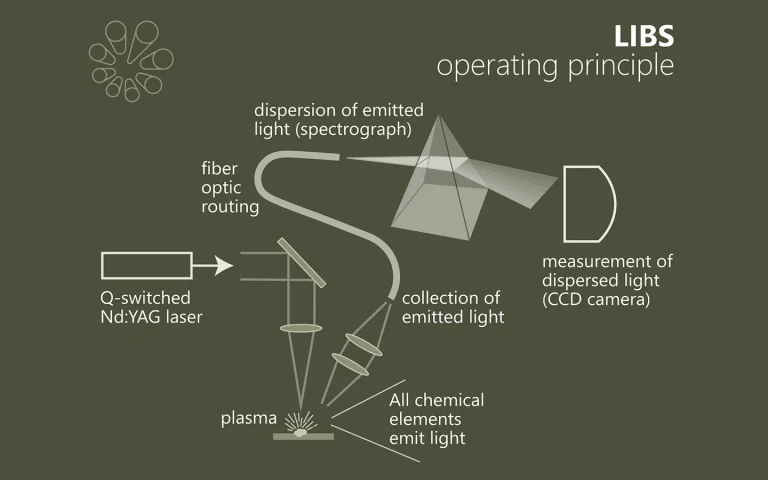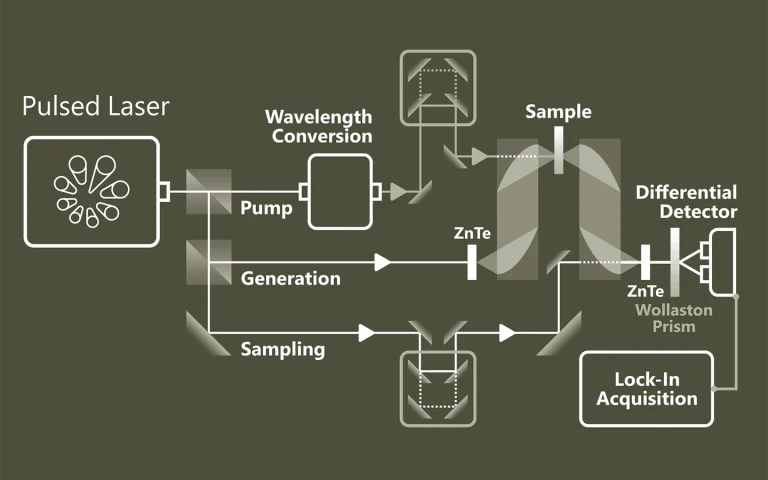Laser spectroscopy
For a long time laser spectroscopy has been source of inspiration for EKSPLA scientific laser engineers. Explore some typical applications where our picosecond and nanosecond lasers has been employed.
SHG spectroscopy / microscopy
Second harmonic generation (SHG) is a second order nonlinear optical effect where two photons of frequency ω are converted to one photon of frequency 2ω. SHG is allowed only in media without inversion symmetry. This optical method it is non‐invasive, can be applied in situ, and can provide real time resolution.
SHG measurements provide information about: surface coverage, molecular orientation, adsorbtion-desorbtion processes, and reactions at interfaces. SHG has the ability to detect low concentrations of analytes, such as proteins, peptides, and small molecules, due to its high sensitivity, and the second harmonic response can be enhanced through the use of target molecules that are resonant with the incident (ω) and/or second harmonic (2ω) frequencies.
SHG microscopy allows for selective probing of a non-centrosymmetric area of sample. This type of nonlinear optical microscope was first used to observe ferroelectric domains and has been applied to various specimens including the biological samples to date. Imaging of the endogenous SHG of biological tissue can be utilized for the selective observation of filament systems in tissues such as collagen, myosin, and microtubules, which exhibit a polar structure. It has been reported that, by imaging exogenous SHG of the membrane, sensitive detection of membrane damage could be realized using the SHG microscope.
FemtoLux 3 laser for the rapid wide-field second harmonic generation microscopy
FemtoLux 3 laser was used as an illumination source in the wide-field second harmonic generation (SHG) microscope. Relatively high laser pulse energy at a medium pulse repetition frequency allowed for a faster single image acquisition compared to that using laser-scanning. It was also possible to acquire images of relatively large sample areas, which paved the way for the rapid imaging of macroscopic sample areas with microscopic resolution.

